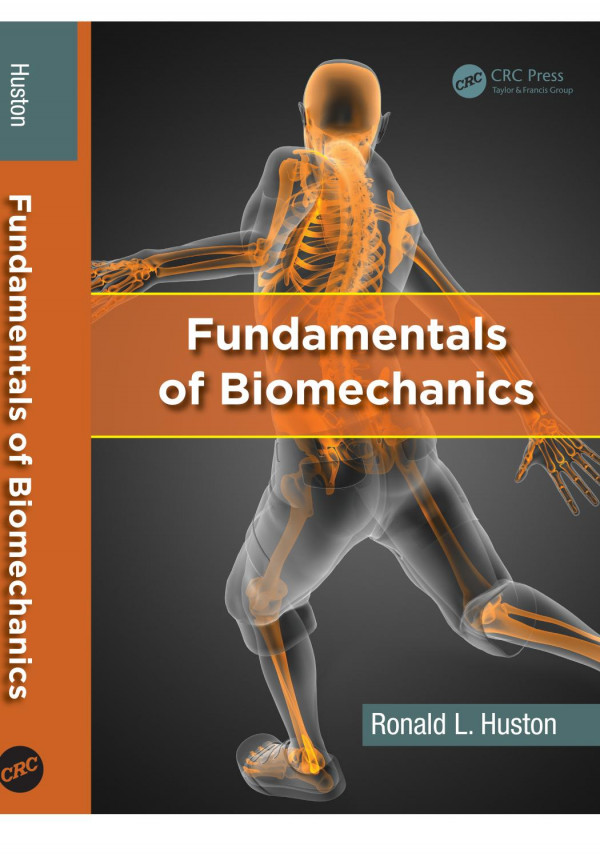(EBOOK PDF) Fundamentals of Biomechanics 1st Edition by Ronald Huston ISBN 1482211564 9781482211566 full chapters
$50.00 Original price was: $50.00.$35.00Current price is: $35.00.
Fundamentals of Biomechanics 1st Edition by Ronald L. Huston – Ebook PDF Instant Download/Delivery: 1482211564, 9781482211566
Full download Fundamentals of Biomechanics 1st Edition after payment
Product details:
ISBN 10: 1482211564
ISBN 13: 9781482211566
Author: Ronald L. Huston
Fundamentals of Biomechanics 1st Edition:
In the last three or four decades, studies of biomechanics have expanded from simple topical applications of elementary mechanics to entire areas of study. Studies and research in biomechanics now exceed those in basic mechanics itself, underlining the continuing and increasing importance of this area of study. With an emphasis on biodynamic modeling, Fundamentals of Biomechanics provides an accessible, basic understanding of the principles of biomechanics analyses.
Following a brief introductory chapter, the book reviews gross human anatomy and basic terminology currently in use. It describes methods of analysis from elementary mathematics to elementary mechanics and goes on to fundamental concepts of the mechanics of materials. It then covers the modeling of biosystems and provides a brief overview of tissue biomechanics. The author then introduces the concepts of biodynamics and human body modeling, looking at the fundamentals of the kinematics, the kinetics, and the inertial properties of human body models. He supplies a more detailed analysis of kinematics, kinetics, and dynamics of these models and discusses the numerical procedures for solving the governing dynamical equations. The book concludes with a review of a few example applications of biodynamic models such as simple lifting, maneuvering in space, walking, swimming, and crash victim simulation.
The inclusion of extensive lists of problems of varying difficulty, references, and an extensive bibliography add breadth and depth to the coverage. Focusing on biodynamic modeling to a degree not found in other texts, this book equips readers with the expertise in biomechanics they need for advanced studies, research, and employment in biomedical engineering.
Fundamentals of Biomechanics 1st Edition Table of contents:
Introduction
Principal Areas of Biomechanics
Approach in This Book
Problem
References
Review of Human Anatomy and Some Basic Terminology
Gross (Whole-Body) Modeling
Position and Direction Terminology
Terminology for Common Movements
Skeletal Anatomy
Major Joints
Major Muscle Groups
Anthropometric Data
Problems
References
Methods of Analysis I: Review of Vectors, Dyadics, Matrices,and Determinants
Vectors
Vector Algebra: Addition and Multiplication by Scalars
Vector Algebra: Multiplication of Vectors
Dyadics
Matrices/Arrays
Determinants
Relationship of 3 × 3 Determinants, Permutation Symbols,and Kronecker Delta Functions
Eigenvalues, Eigenvectors, and Principal Directions
Maximum and Minimum Eigenvalues and the Associated Eigenvectors
Use of MATLAB®
Elementary MATLAB® Operations and Functions
Problems
References
Methods of Analysis II: Forces and Force Systems
Forces: Vector Representations
Moments of Forces
Moments of Forces about Lines
Systems of Forces
Special Force Systems
Principle of Action–Reaction
References
Methods of Analysis III: Mechanics of Materials
Concepts of Stress
Concepts of Strain
Principal Values of Stress and Strain
Two-Dimensional Example: Mohr’s Circle
Elementary Stress–Strain Relations
General Stress–Strain (Constitutive) Relations
Equations of Equilibrium and Compatibility
Use of Curvilinear Coordinates
Review of Elementary Beam Theory
Thick Beams
Curved Beams
Singularity Functions
Elementary Illustrative Examples
Listing of Selected Beam Displacement and Bending Moment Results
Magnitude of Transverse Shear Stress
Torsion of Bars
Torsion of Members with Noncircular and Thin-Walled Cross Sections
Energy Methods
Problems
References
Methods of Analysis IV: Modeling of Biosystems
Multibody (Lumped Mass) Systems
Lower-Body Arrays
Whole-Body, Head/Neck, and Hand Models
Gross-Motion Modeling of Flexible Systems
Problems
References
Tissue Biomechanics
Hard and Soft Tissue
Bones
Physical Properties of Bone
Bone Development (Wolff’s Law)
Bone Failure (Fracture and Osteoporosis)
Muscle Tissue
Cartilage
Ligaments/Tendons
Scalp, Skull, and Brain Tissue
Skin Tissue
Problems
References
Kinematical Preliminaries: Fundamental Equations
Points, Particles, and Bodies
Particle, Position, and Reference Frames
Particle Velocity
Particle Acceleration
Absolute and Relative Velocity and Acceleration
Vector Differentiation, Angular Velocity
Two Useful Kinematic Procedures
Configuration Graphs
Use of Configuration Graphs to Determine Angular Velocity
Application with Biosystems
Angular Acceleration
Transformation Matrix Derivatives
Relative Velocity and Acceleration of Two Points Fixed on a Body
Singularities Occurring with Angular Velocity Componentsand Orientation Angles
Rotation Dyadics
Euler Parameters
Euler Parameters and Angular Velocity
Inverse Relations between Angular Velocity and Euler Parameters
Numerical Integration of Governing Dynamical Equations
Problems
References
Kinematic Preliminaries: Inertia Force Considerations
Applied Forces and Inertia Forces
Mass Center
Equivalent Inertia Force Systems
Problems
Human Body Inertia Properties
Second Moment Vectors, Moments, and Products of Inertia
Inertia Dyadics
Sets of Particles
Parallel Axis Theorem
Eigenvalues of Inertia: Principal Directions
Eigenvalues of Inertia: Symmetrical Bodies
Application with Human Body Models
Problems
References
Kinematics of Human Body Models
Notation, Degrees of Freedom, and Coordinates
Angular Velocities
Generalized Coordinates
Partial Angular Velocities
Transformation Matrices: Recursive Formulation
Generalized Speeds
Angular Velocities and Generalized Speeds
Angular Acceleration
Mass Center Positions
Mass Center Velocities
Mass Center Accelerations
Summary: Human Body Model Kinematics
Problems
References
Kinetics of Human Body Models
Applied (Active) and Inertia (Passive) Forces
Generalized Forces
Generalized Applied (Active) Forces on a Human Body Model
Forces Exerted across Articulating Joints
Contribution of Gravity (Weight) Forces to the GeneralizedActive Forces
Generalized Inertia Forces
Problems
References
Dynamics of Human Body Models
Kane’s Equations
Generalized Forces for a Human Body Model
Dynamical Equations
Formulation for Numerical Solutions
Constraint Equations
Constraint Forces
Constrained System Dynamics
Determination of Orthogonal Complement Arrays
Problems
References
Numerical Methods
Governing Equations
Numerical Development of the Governing Equations
Outline of Numerical Procedures
Algorithm Accuracy and Efficiency
Problems
Reference
Simulations and Applications
Review of Human Modeling for Dynamic Simulation
Human Body in Free Space: A “Spacewalk”
Simple Weight Lift
Walking
15.5 Swimming
Crash-Victim Simulation I: Modeling
Crash-Victim Simulation II: Vehicle Environment Modeling
Crash-Victim Simulation III: Numerical Analysis
Burden Bearing: Waiter/Tray Simulations
Other Applications
People also search for Fundamentals of Biomechanics 1st Edition:
synopsis of fundamentals of biomechanics
knudson d fundamentals of biomechanics
knudson d 2007 fundamentals of biomechanics
fundamentals of biomechanics 3rd edition pdf
fundamentals of kinesiology and biomechanics in sports notes class 11
Tags:
Ronald Huston,Fundamentals,Biomechanics




